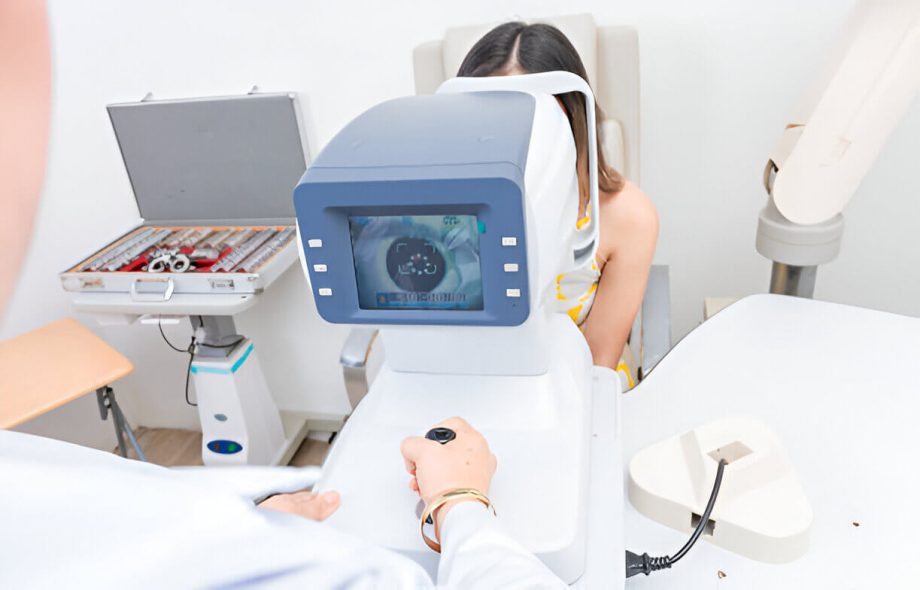Modern eye care depends on advanced tools. One such tool is the specular microscope. It is used to check the health of the cornea. The cornea is the clear front part of the eye. It plays a big role in vision.
In this article, we will explain what a specular microscope is. You will also learn how it works and why it is useful in eye care clinics. If you are an eye doctor, technician, or patient, this guide is for you.
1. What Is a Specular Microscope?
A specular microscope is a machine used to take pictures of the cornea. It focuses on the endothelial cells, which are found on the inner layer of the cornea.
These cells keep the cornea clear. They control the flow of fluid in and out of the cornea. If these cells are damaged or lost, the cornea can become swollen and cloudy. This affects vision.
The specular microscope helps eye doctors see and count these cells. It shows their shape, size, and pattern.
2. How Does a Specular Microscope Work?
The patient sits in front of the microscope. They look straight ahead at a light. The machine takes a picture of the inner surface of the cornea.
The image shows tiny hexagonal cells. The system then gives important data such as:
- Cell density – how many cells are present
- Cell size variation – difference in size between cells
- Cell shape – how regular or irregular the cells are
This test is quick, painless, and does not touch the eye.
3. Why Is It Used in Eye Clinics?
Eye care clinics use the specular microscope for many reasons. It helps monitor the health of the cornea, especially the endothelium.
Common Uses Include:
- Before cataract surgery
- After eye surgeries
- For patients with corneal diseases
- For contact lens users
- To check cornea health in older adults
It helps doctors make safer choices before and after surgery.
4. Helps in Pre-Surgery Evaluation
Before performing surgery, doctors must know if the cornea is healthy. If the endothelium is weak, the surgery might cause problems.
Why It Matters:
- Low cell count can lead to corneal swelling
- Patients may develop vision problems after surgery
- The test helps decide if surgery is safe
This is very important before cataract or glaucoma surgery.
5. Useful for Post-Surgery Follow-Up
After surgery, the cornea can be stressed. Doctors need to check if the endothelial cells are damaged.
The specular microscope:
- Tracks cell loss
- Checks recovery progress
- Detects early signs of swelling or cloudiness
This helps in early treatment and prevents further problems.
6. Helps Diagnose Corneal Diseases
Some diseases affect the endothelial layer of the cornea. These include:
- Fuchs’ endothelial dystrophy
- Bullous keratopathy
- Herpes keratitis
The specular microscope helps in early detection. It also helps in tracking how the disease is changing over time.
7. Supports Contact Lens Care
Long-term contact lens use can affect the cornea. It may reduce cell count or change cell shape.
How It Helps:
- Checks the cornea health of contact lens users
- Helps doctors decide if lenses are safe to wear
- Prevents long-term damage
This is important for patients who wear lenses daily.
8. Fast, Safe, and Non-Invasive
Patients like this test because it is:
- Quick – takes just a few minutes
- Painless – no discomfort
- Non-contact – nothing touches the eye
Clinics like it because it gives valuable data fast. The results can be used right away for decision-making.
9. Improves Patient Care
Good tools lead to better care. A specular microscope allows doctors to give clear advice to their patients.
How It Improves Care:
- Shows real images of the eye
- Helps explain conditions to patients
- Builds trust through clear communication
- Leads to better treatment planning
Patients are more likely to follow treatment when they understand the condition.
10. A Valuable Tool for Modern Clinics
Eye care clinics that use modern technology can give better service. A specular microscope:
- Improves diagnostic accuracy
- Helps avoid surgical risks
- Enhances long-term eye health tracking
- Adds value to the clinic’s services
It is a smart investment for clinics focused on high-quality care.
Conclusion
The specular microscope is a key tool in modern eye care clinics. It helps doctors see and study the cornea’s inner layer. This is vital for keeping the eye healthy and for making smart choices about treatment.
The system is fast, safe, and simple to use. It gives clear data on the health of endothelial cells. It helps before and after surgery, during disease treatment, and for contact lens users.
In short, the specular microscope helps eye clinics offer better care and better results. If you are a clinic owner or an eye care specialist, adding this tool to your practice is a wise step forward.


 :
: